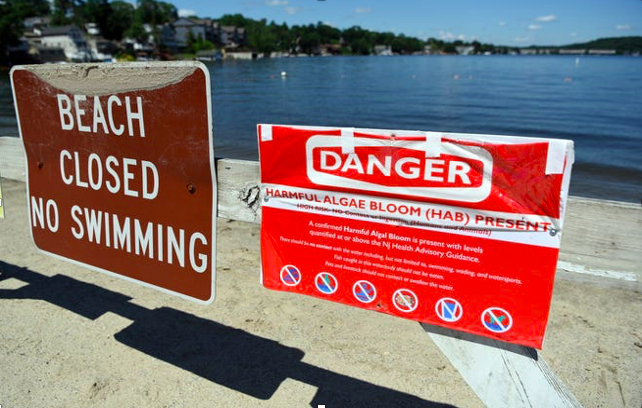Last year’s closure of Lake Hopatcong shows why stormwater utilities are a smart investment for local economies
The COVID 19 crisis is just the most recent reminder that human, economic and environmental health are all intertwined. This is not only the case at a global level, but at a local community level as well.
Last year’s closing of Lake Hopatcong due to harmful algae blooms also underscored how otherwise thriving communities and vibrant local economies are vulnerable to environmental disasters that can come in different forms. The degree to which any lake enhances nearby property values and drives economic activity and growth is a function of one thing – its overall health.
So it only follows that doing what we can to maintain the beauty and health of our lakes and waterways is not only the responsible thing to do as good stewards, but also the smart thing to do as residents and business people who care about our communities, livelihoods and quality of life.

Lake Hopatcong in Sussex County. – DEPOSIT PHOTOS
As any successful business knows, some of the keys to remaining successful include understanding and managing risk, being able to adapt to change, and investing in those factors most directly linked to lowering risk and increasing long-term profitability.
The conditions that are conducive to creating harmful algae blooms are becoming more common as summers continue to trend hotter, and of extreme rainfall events become more frequent. The 2019 summer closure is a clear signal of what can and will happen more often if we do nothing to mitigate future risk. If we stand pat, the negative impact on property values and local economies could cascade and become cumulative over time. We’ve seen this happen in other states – lake communities in Ohio where harmful algae blooms led to a drop of 11 percent to 17 percent in home values, and up to 30 percent in lake-adjacent homes.
We might not be able to control the air temperature or how much it rains, but there are things we can do to minimize the risk of algae blooms even with hotter summers and more intense rain events. Adapting to changing external conditions involves making some basic changes to how we design, build and maintain the infrastructure of buildings, roads and parking lots. The key is to minimize the amount of stormwater runoff and the number of contaminants within the runoff – both of which are completely within our power.
Greening the gray
This process involves a combination of replacing impervious surfaces that don’t allow water to be absorbed into the ground with surface materials that are permeable and modernizing stormwater infrastructure to mitigate stormwater runoff from impervious surfaces.
Transitioning from gray infrastructure to green infrastructure is feasible, effective and yields a favorable return on investment for entire communities: $7 to $27 in benefits for every dollar invested. In order to expedite both the implementation and benefits of this transition, the Clean Stormwater and Flood Reduction Act signed into law last year, allows municipalities to collect fees based on the amount of runoff generated by impervious surface on a property. These fees are then used to invest in green infrastructure that is designed to reduce the amount of runoff, mitigating the risk of harmful algae blooms, thus protecting the health of the lake and adjacent communities.
Stormwater utilities are designed to be fair in how fees are levied, since those whose properties contribute the most to harmful stormwater runoff pay the most toward mitigating the harm they’re helping to create. The design also creates a financial incentive for all property owners to redevelop their properties with more permeable surface materials, which also benefits the surrounding community. This dynamic results in a virtuous cycle of economic activity and development that creates the jobs required to build green infrastructure projects which help protect the lake’s health, residents’ property values and local economies.
This virtuous cycle has materialized in lake communities across the country – including here in New Jersey. While Lake Hopatcong was closed last summer, Lake Mohawk remained open for all lake activities and dockside restaurants were full of customers. What was the difference? During a public forum with a panel of experts, local residents learned about algae blooms, their harmful effects, and how to prevent them by investing in low-cost green infrastructure measures that would control runoff into the lake. Their decision to approve the funding for these measures proved to be a smart investment that will continue to pay dividends in future years.
Lake Mohawk’s experience can act as a proof of concept for Lake Hopatcong. Stormwater utilities will help keep the lake and businesses open in future years and contribute to thriving communities and local economies.
Richard Lawton is executive director of the NJ Sustainable Business Council – a state affiliate of ASBC which is a national network of over 250 thousand companies working to advance market and policy solutions for a more just and sustainable economy. NJSBC is a state partner in ASBC’s Clean Water is Good for Business campaign.
This article originally appeared in NJBiz

